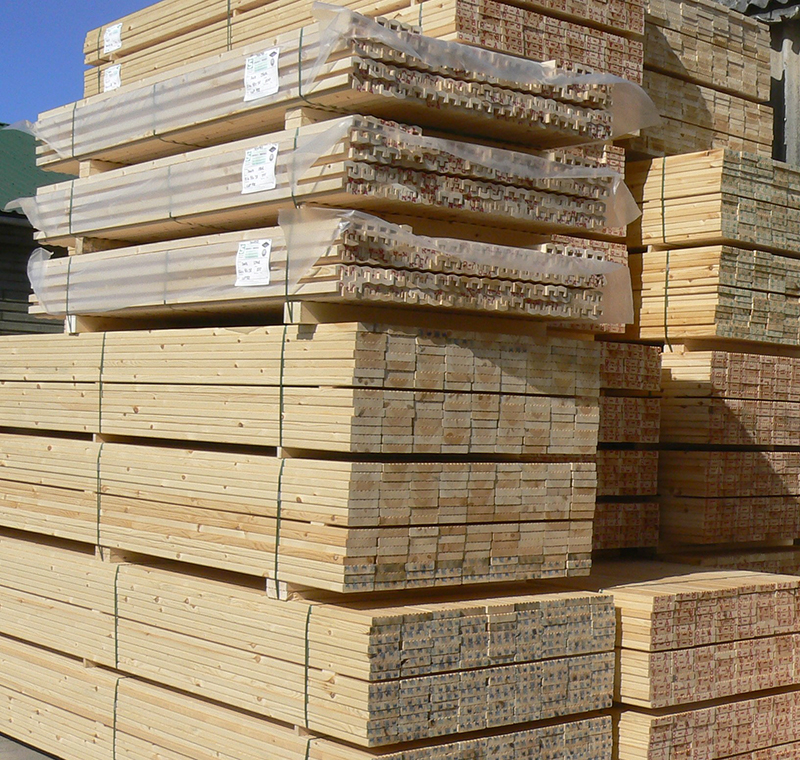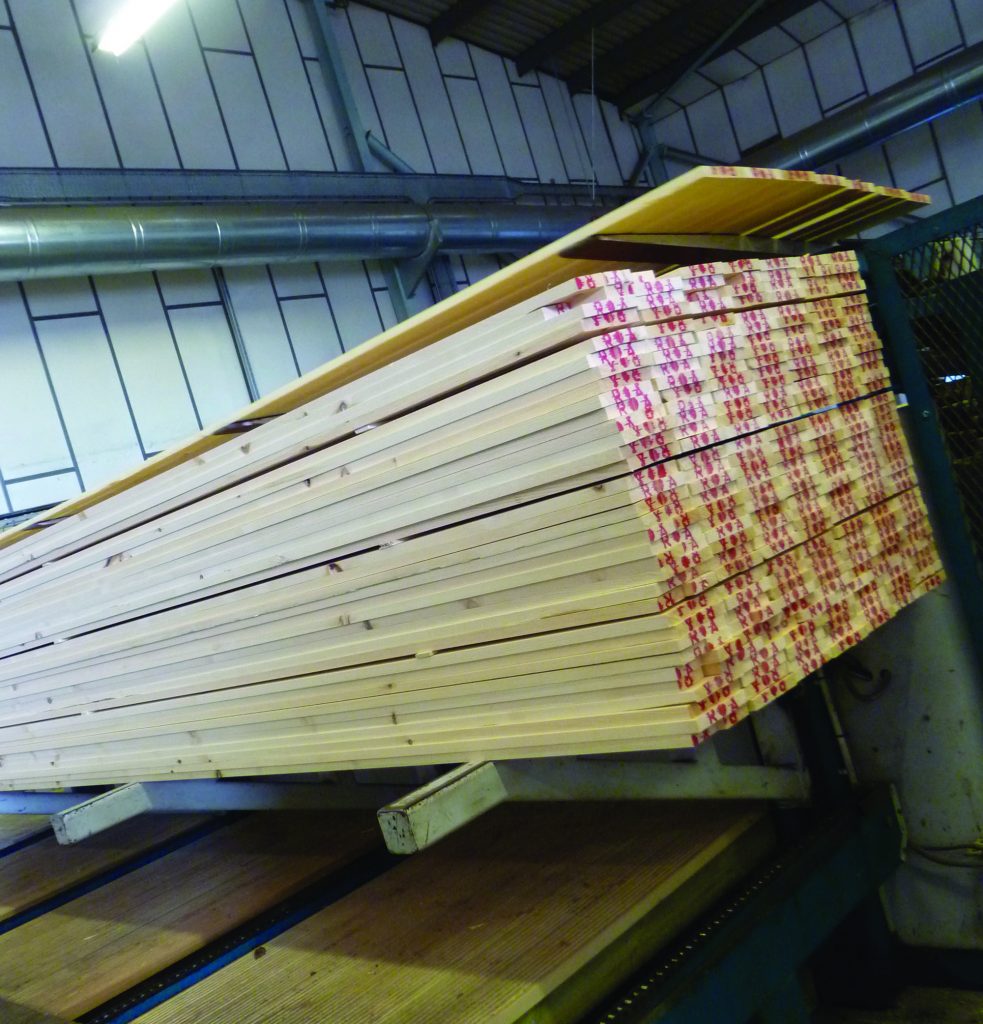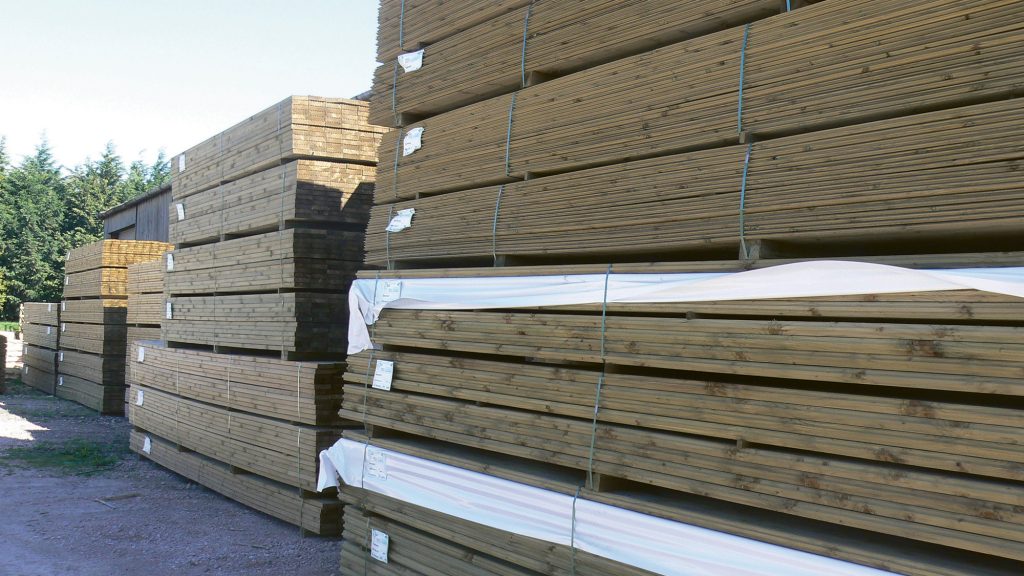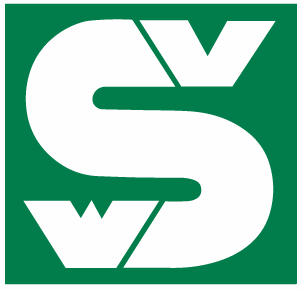


TIMBER GRADING
The grading of timber considers the size, quality and condition of a piece of timber at the time of the original inspection.
There are two fundamental types of grading – mechanical and visual:
Mechanical
Mechanical grading is employed when we try to determine the strength characteristics of a piece of timber. This is usually done by measuring the stiffness of the timber when a load is applied to it by a strength grading machine.
The need to assess the strength of a piece of timber is usually required where timber is to be used in a constructional or load bearing capacity, such as the manufacture of roof trusses.
Visual
Visual grading is a judgement of the timber’s appearance and suitability for its end use, considering both the natural characteristics and manufacturing imperfections of each piece.
Visual grading is used to determine grades for constructional use, although it is more usually used to determine the grade based on appearance.
The grade classification for the appearance of the timber is generally determined in the country of origin (see Timber Supply) and varies from species to species.
TIMBER SUPPLY
Severn Valley Woodworks utilise only quality timbers from Scandinavian sources.
Scandinavian Softwoods
The main commercial grades imported into the UK from Scandinavia are as follows:
Unsorted Grade (Grades 1-4)
Sawfalling Excluding Sixths (Grades 1-5) Fifths Grade
Sixths Grade
In the unsorted grade, greater notice is taken of the defects to the better face and to the fact that edge defects are more decisive than the face defects in determining the grade.
Where defects occur close together on a piece, particularly with knots, the size and quantity of the allowable defects must be less than would otherwise be allowed and the general impression of the cluster of defects must be the basis for determining the grade. Defects that occur in the middle part of a piece are likely to be of greater influence on the grade than defects on the ends.
This guide is not intended to be definitive and in the case of any dispute, reference should be made to the appropriate grading rules as a matter of course.
TIMBER DEFECTS
Defects in timber are classified into two main groups, as follows:
Defects in Quality
Structure – comprising of knots, pitch pockets, bark pockets, compression wood, pitch wood, interlocking grain, cross grain, water wood streak, scars, rot, insect damage.
Manufacture – these arise in the course of production of the sawn These comprise wane, wrong measure and other manufacture defects.
Shakes, Checks, and Splits – are of three different kinds – heart shakes, ring shakes and seasoning checks and splits that occur during the seasoning of sawn timber. With checks and splits they are measured by lengths and depth with particular regard for their width.
Deformities – include twist, cupping, bowing and springing.
Defects in Condition
Moisture – where the moisture content of the timber is not as stipulated in the contract and the timber cannot be considered properly seasoned.
Blue – a decolouration penetrating the sapwood caused by fungi. There are two types; log blue present in the log before it is sawn, yard and kiln blue colour after sawing.
Other discolouration – surface colour changes can take place during drying and storing.
Some of the key timber defects are as follows:
Shake – Is a lengthwise separation of the wood which usually occurs between or through the rings of annual growth.
Split – Is a separation of the wood due to tearing apart of wood cells. Split is usually due to large variations in temperature.
Stain – Is a marked variation from the natural colour of the wood. Natural colour will be uniformly distributed through certain annual rings, whereas stains are usually in irregular patches. Stained wood does not reduce the strength of the piece but may be undesirable where appearance grade timber is required. Stain is usually brown or blue.
Mould – A fine vegetable growth, or mildew, that forms on wood in damp stagnant atmospheres. It is the least harmful type of fungus and is usually confined to the surface of wood.
Wane – Bark or lack of wood on the edge or corner of a piece of timber.
Weathering – Resisting alternate wet and dry conditions. Chemical and mechanical decolouration and disintegration of wood surfaces occur due to exposure to weather, dust, light. Also fibre change may occur due to varied moisture content.
TIMBER TYPES AND STRUCTURE
Softwoods
Conventional term used to denote the timber from trees belonging to the botanical group, the Gymnosperms. Commercial timbers of this group are practically confined to the class of Coniferae, or Conifers.
Hardwoods
General term used to denote the timber from trees belonging to the botanical group, the Angiosperms. Hardwood timbers are generally from slow grown, broad leafed species.
Heartwood
A term applied to the central portion of a log including the pith and the adjacent wood which may be defective.
Sapwood
Sapwood is the outer layers of growth between the bark and the heartwood. The outer two to three inches of the sapwood is the living fibre actively involved in growth. The sapwood is the portion of the tree that is most susceptible to stain. Bright sapwood shows no stain and is not limited in any grade, except as specifically provided.
Annual ring of growth (measurement of)
An average number of annual rings at either one end of a piece of timber, over a 3” line. The line is usually measured along the centre three inches of the longest radial line that can be drawn along the piece of timber.
TIMBER MOISTURE CONTENT AND DRYING
Timber is “hygroscopic”. This means it will take in and give up moisture depending on the condition in which it is placed. It is therefore most important that we have timber at the right “moisture content” before it is put in-situ. The “moisture content” is the weight of water in the wood expressed as a percentage of the weight of oven dry wood. The “moisture content” of dry wood should range from 14% to 20%.
Why do we dry timber?
Look at any felled tree and the first thing you notice is how wet it is. When it is sawn and is still wet, it will not twist, warp or bend. If you manufacture anything from wet timber, there is a very good chance it will become distorted, shrink, split and generally be unusable. When you dry timber these problems are minimised.
By drying timber in a correct manner, tension within the timber, which can cause many defects, is relieved, and we create timber that is ready for the manufacturing process.
There are several advantages to using dry timber. It is stronger and holds nails better than green timber; it is more stable and also minimises future warping; it is less subject to stain, decay and insect attack and is easier to paint and treat with preservatives.
Air Drying
This is carried out by stacking pieces of timber on top of each other, separated by lathes or sticks to allow air to circulate. Alternatively, it can be achieved by placing timbers at right angles to each other, creating gaps for air circulation. This method of drying can take some considerable time.
Kiln Drying
This is the method used to speed up the drying process using a kilning chamber or de-humidifier.
TIMBER DURABILITY
Durability is an important consideration when specifying timber. The sapwood of most timbers is considered perishable and therefore assessments of the natural durability of any species of timber is based on its heartwood.
The basic classifications of durability are as follows:
Perishable
Less than 5 years when in contact with the ground.
Non durable
5-10 years when in contact with the ground.
Moderately durable
10-15 years when in contact with the ground.
Durable
15-25 years when in contact with the ground.
Very durable
More than 25 years when in contact with the ground.
All the tests refer to heartwood stakes of 50mm x 50mm section driven in the ground.
Because the softwood timbers we utilise contain considerable amounts of sapwood, Severn Valley Woodworks pressure preservative pre-treat our timbers to help ensure they have low maintenance and a long service life.
GENERAL TIMBER TERMS
Quarter Sawn
Otherwise known as Rift Sawn. Timbers cut radially from the log, which gives a vertical edge of straight grained appearance.
Hit or Miss
Means the piece of timber after machining may be completely surfaced, partly surfaced or entirely rough, depending upon the accuracy of the machining.
TIMBER INDUSTRY ABBREVIATIONS
| ACT | Actual Measure |
| A.D. | Air Dried |
| Batten | Sawn softwood 50/100mmx125/200mm |
| Baulk | Sawn timber 100 x 115mm or greater |
| Board | Sawn softwood under 50mm thick x 100mm & up |
| B.H.N.D. | Borer Hole No Defect |
| B/L | Bill of Lading |
| B.S.N.D. | Blue Stain No Defect |
| C&F | Cost and Freight |
| CDX | Softwood Ply |
| C.I.F | Cost Insurance & Freight |
| Class 1/0 | Flame Retardant classification |
| C.L.S. | Canadian Lumber Standard |
| Cu.Ft. | Cubic Foot |
| Deal | Sawn softwood 50/100mmx225/275mm |
| D.B.B. | Deals Battens & Boards |
| D/D | Delivered |
| F.A.S. | Firsts & Seconds (As well as Free Alongside) |
| F.B.M. | Foot Board Measure |
| F.B.Y. | Free Buyers Yard |
| F.O.B. | Free on Board |
| F.O.M. | Free on Motor |
| F.O.R. | Free on Rail |
| F.O.W. | First Open Water |
| F/R | Fire Resistant /Retardant |
| K.D. | Kiln Dried |
| Lin.Ft. | Linear Foot |
| Lin.M. | Linear Metre |
| M2 | Square Metre |
| M3 | Cubic Metre |
| M.C. | Moisture Content |
| MDF | Medium Density Fibreboard |
| Merch | Merchantable |
| MR | Moisture Resistant |
| M.T.W. | Machined to Width |
| NOM | Nominal Measure |
| OSB | Orientated Strand Board |
| PCS | Pieces |
| P.E.T. | Precision End Trimmed |
| P.H.N.D. | Pin Hole No Defect |
| Prefelted | Bitumen Coated Roof Decking |
| PTL | Packaged to Length |
| P.A.R. | Planed All Round |
| P.S.E. | Planed Square Edge |
| P.T.G. | Planed Tongued & Grooved |
| PTGV1/S | Planed Tongued Grooved & V Jointed one side |
| PTGV2/S | Planed Tongued Grooved & V Jointed two sides |
| P1E/S1E | Planed or Surfaced 1 edge |
| P2E/S2E | Planed or Surfaced 2 edges |
| P1S/S1S | Planed or Surfaces 1 side |
| P2S/S2S | Planed or Surfaced 2 sides |
| P1S1E/S1S1E | Planed or Surfaced 1 side & 1 edge |
| P2S1E/S2S1E | Planed or Surfaced 2 sides & 1 edge |
| R.S. | Rough Sawn |
| S4S | Surfaced 4 Sides |
| Scantling | Sawn softwood 50/100mm x 50/115mm |
| S.D. | Shipping Dry |
| S.E. | Square Edged |
| STD | Standard |
| Strip | Sawn softwood under 50mm x under 100mm |
| TB | Truck Bundled |
| Troms | Heavy Density Chipboard |
| T/T | Through & Through (Sawn) |
| U/S | Unsorted |
| WBP | Weather & Boil proof |
| W/E | Waney Edge |

